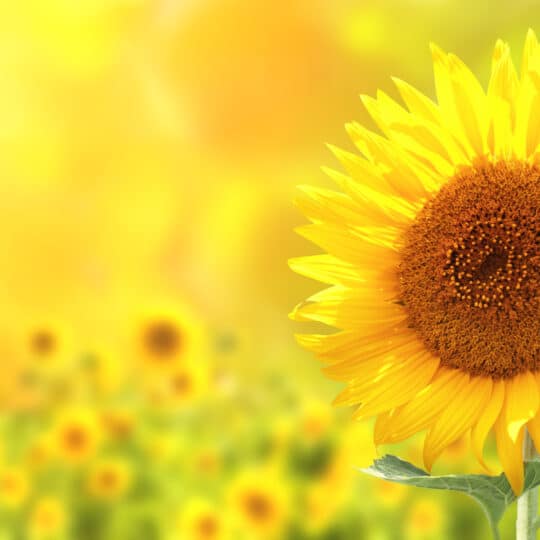Keeping Plants Healthy in the Heat
Even with Less Water
Posted
July 27, 2023

Sometimes the summer heat can be unbearable. Unfortunately for some plants, they’re literally rooted in the ground and forced to face the harsh weather. But you can help them not only survive, but thrive. Learn about keeping plants healthy in the heat and maintain your yard and garden throughout the sweltering season.
Keeping Plants Healthy in the Heat
It’s hot. And depending on where you live, there may be restrictions in place that force you to conserve water. This means there are less resources for your yard and plants. But it doesn’t have to mean death to your lawn. While you can’t change the weather, or government regulations, you can still enjoy robust landscaping. The key is to start from the ground up.
- Moisture-Retaining Soil. Have you noticed if your soil cracks at the top? Does water run off faster than it absorbs? Then the soil is not retaining moisture. You can help your soil absorb more water by adding materials like coconut coir and peat. It’s better to do this in the spring or fall so that it’s already slowly releasing moisture by the summer.
- Heat Tolerant Plants. There are still beautiful, flowering plants that stand up to the harsh heat. Warm weather grasses thrive in the summer, giving you a greener lawn. Succulents aren’t just for a tiny windowsill pot. Plant cacti in your garden. Some varieties can even withstand winter’s wrath and bounce back in the summer. Then there are native plants that already thrive in your area. These are more likely to survive with less water and maintenance.
- Mulch. Once you’ve got moisture-retaining soil and heat-tolerant plants, make it even more summer-sturdy by adding a thick layer of mulch. Nutrient-rich mulch has many benefits, including regulating soil temperature, retaining moisture, and preventing weeds. You can even reuse grass clippings and shredded leaves as natural mulch.
- Just Add Shade. For plants that thrive in more shade, accent a part of your yard or garden with an umbrella, gazebo, or shade sail.
- Save the Fertilizer for Fall. You don’t need to try to revive your grass or plants with fertilizer just yet. This step is best left for the cooler fall and spring season. This way, any slow-release formula is working in the harsher seasons to help your plants pull through. Plus, fertilizer motivates growth, which requires water—a resource that’s lacking this time of year.
Sometimes, one of the best things you can do for your plants is to just let them be. Think about how you feel when you’re stressed. Would you like to be bothered? No. Try not to prune, transplant, reseed, or anything major during the hotter months unless absolutely necessary.
Water Smarter
While you want to follow local regulations, there are still ways to make the most of the water you can use.
- Water Early. Beat the heat and water plants early in the morning. This way they get enough hydration to last throughout the day. Later in the evening is the second best time, but you want to make sure the water has time to dry before nightfall. The hottest point of the day is the best time for water to evaporate quickly and not give your plants what they need.
- Water Deeply. A slight sprinkling on the leaves won’t do much for plant health and hydration. Point the hose toward the roots and water deep enough to drench a few inches of mulch and soil. This way you can water less frequently as well.
- Reuse Water. So much water can go to waste. For instance, if you use water to boil food, you can let it cool and reuse to add nutrients to your plants. Having a rain basin also comes in handy during drought conditions to catch and save any water you do get Just make sure the container is sealed so it doesn’t attract standing water-loving pests like mosquitoes.
- Focus on New Plants. Well-established plants typically don’t need as much water as a new addition to the garden. While you don’t want to plant anything new in the heat of the summer, you want to take care of what was just planted in the spring.
Keep Them Contained
Another option for keeping plants happier in the summer is to move them out of the harsh sun. Choose a light-colored container that won’t absorb as much heat and move potted plants to shady areas when possible. Since these plants don’t have the luxury of accessing ground water, you will have to water them more.
Houseplants need help from the heat too. Even ones usually kept in a window can scald in the intense summer sun. Give them a little shade and added moisture.
Don’t forget, the gardener needs water too. Stay hydrated while you’re taking care of your plants so you can all stay healthy and enjoy the season.